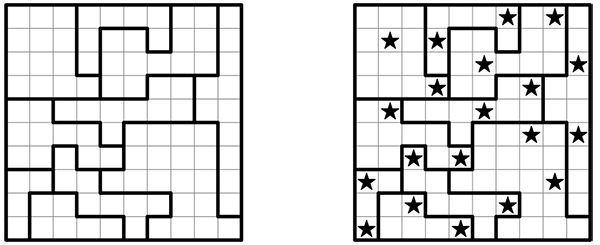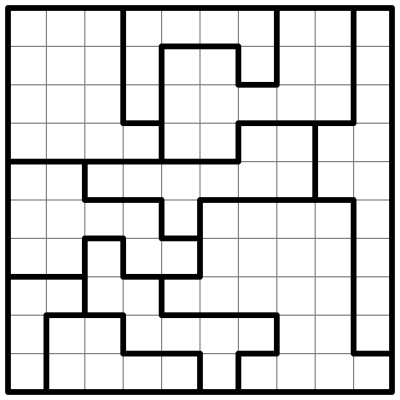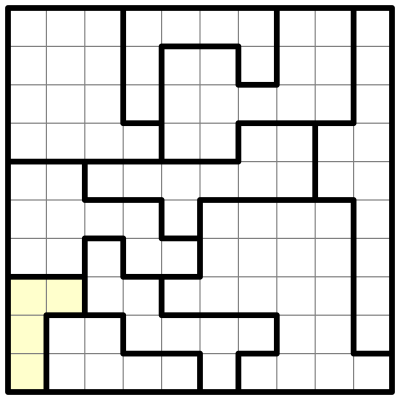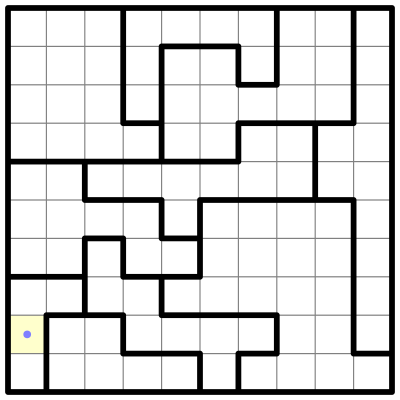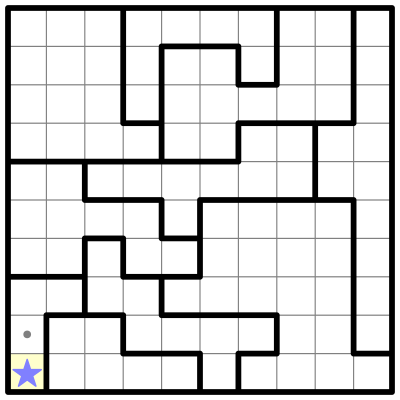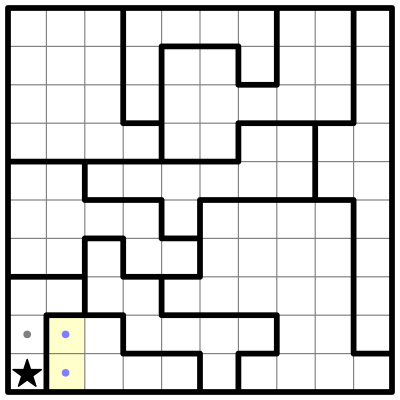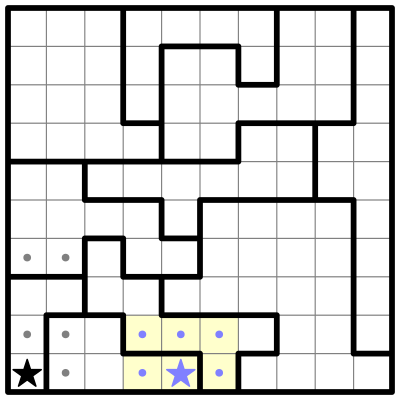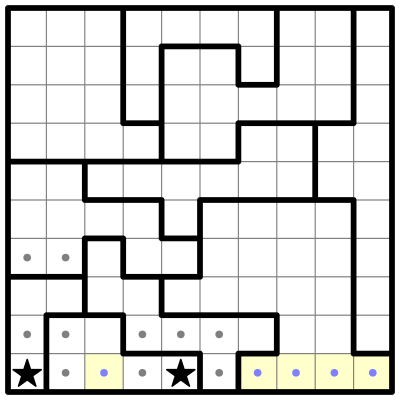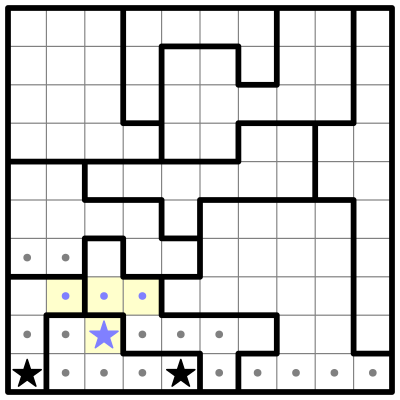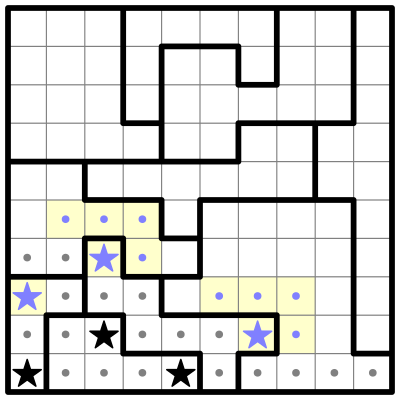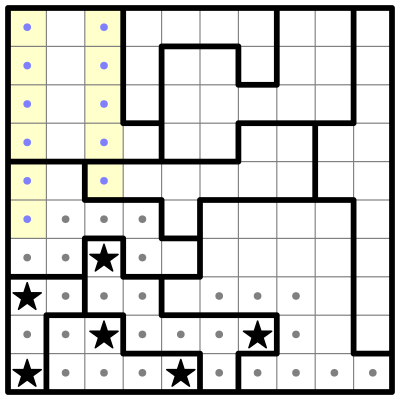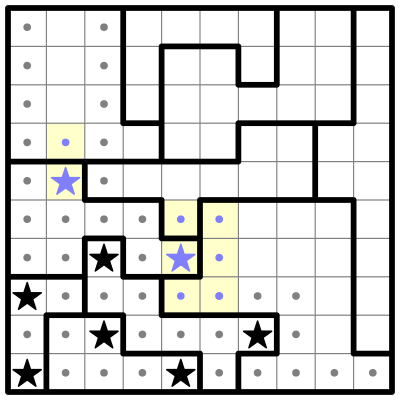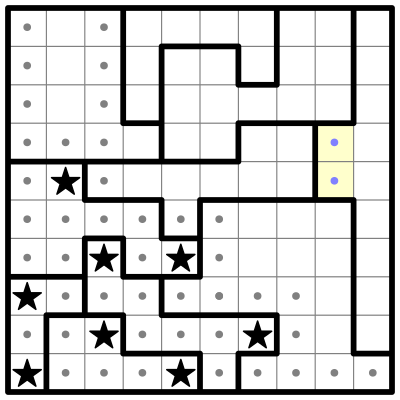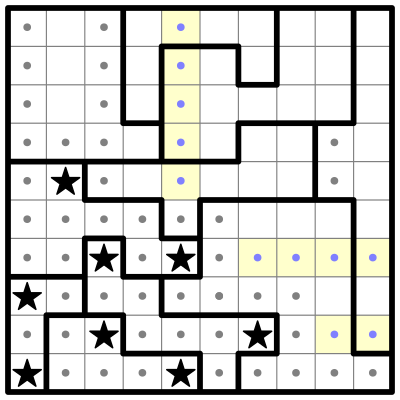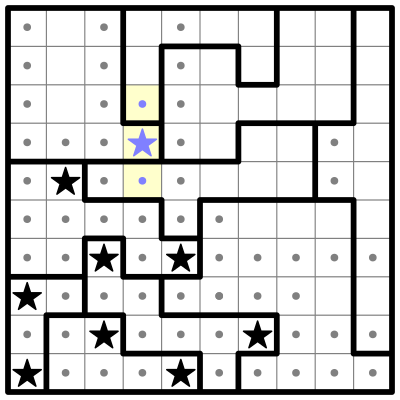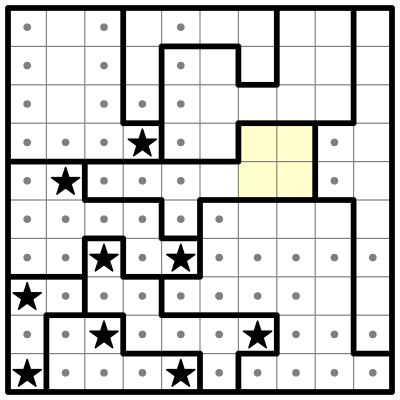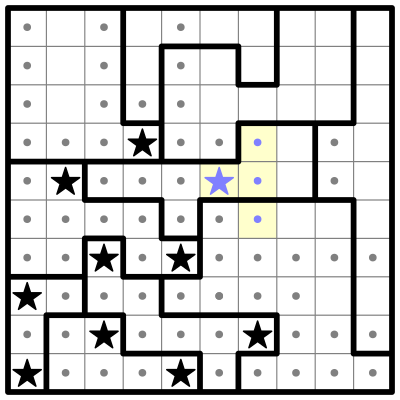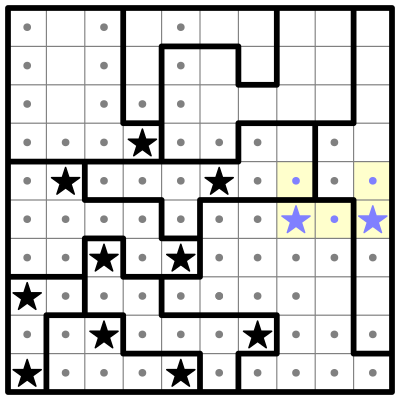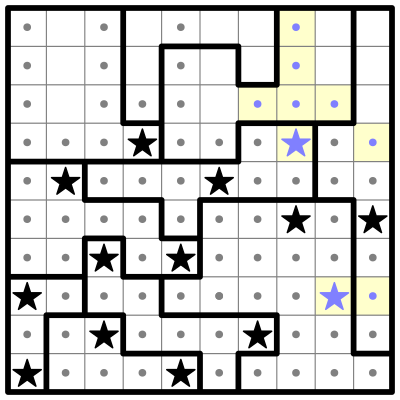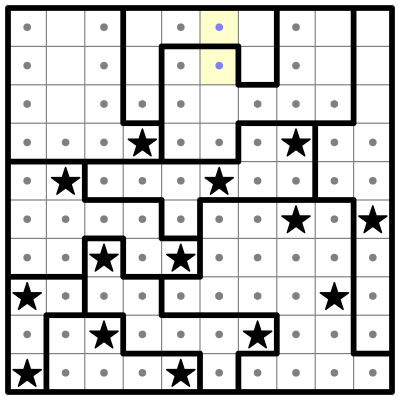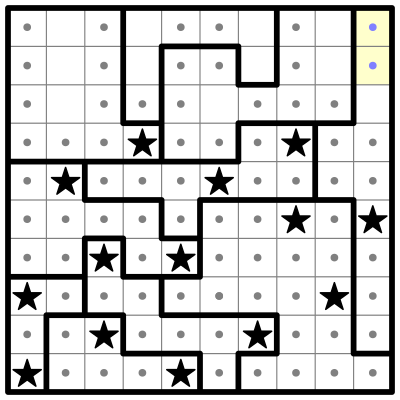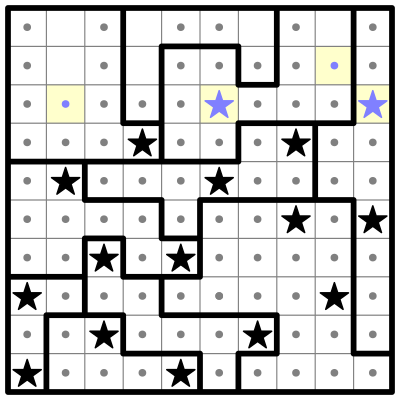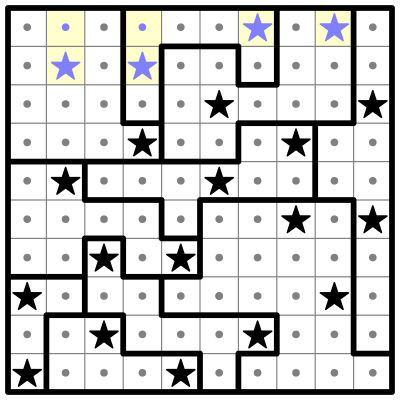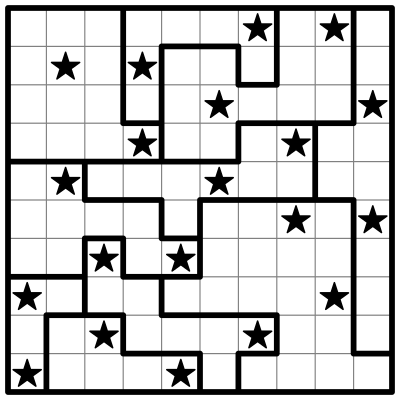You may be tempted to start placing stars willy nilly, hoping you get lucky with your first placement and the rest of the puzzle will fall into place. This method leads to a lot of erasing, torn paper, and tears. It is much better to use logic and only place stars when you are absolutely sure they are in the right place. This often starts with figuring out where the stars
can't go.
The first thing I usually do is look at the smallest regions, as these are often solveable or partially solveable, due to the tight space inside. When a region must contain two stars, the smallest possible region is 3 squares in a row (or column), like so:
If you see one of those you can solve it immediately by eliminating the dot in the center, and putting stars on either end. If that center square contained a star, there would be no room for the second star, since stars cannot touch.
In this particular puzzle, there is no such shape, but there is a small upside-down L-shape in the lower left-hand corner.
We can eliminate one of the squares right away. This is because this square neighbors every other cell in the L-shaped region. If we were to place a star there, there would not be room for a second star. Can you spot this square? Here it is:
Note that when I eliminate cells from contention, I always mark them with dots (you can use Xs, dots, slashes, whatever you like — I happen to like dots). Whatever symbol you use, it's important to mark impossible cells, since these puzzles are solved using the process of elimination. Once all but two squares in a row, column or region are marked, you will know that the remaining cells must contain stars. As noted pipe smoker Sherlock Holmes once said, "Once you eliminate the impossible, whatever remains, no matter how improbable, must be the truth."
Having eliminated that square, the region is divided into two parts, each of which must contain a star. The bottom part is only one square, so we can place a star there.
Having placed the star, we can eliminate all the surrounding cells around the star.
In addition, we can eliminate the two squares directly above the top two squares in the L-shaped region, since each of these squares would end up being adjacent to the star that goes in there, wherever it ends up.
This is a common pattern - whenever there are two adjacent cells (horizontally or vertically) that must contain a star, you can eliminate the squares on either side that abut both of the star candidates.
Sadly, there are no more easy-peasy L-shapes. Or are there??? Look closely and you'll see we made a new L shape to the right of the region we were just working on. So let's go ahead and do the same things to it.
Now we are truly out of L-shapes. However, take a look at the bottom row. It now contains two stars! Since every row must contain exactly two stars, we can eliminate every other square in the bottom row.
Having done that, you'll see that the bolded region where we just placed a star has only a single open square left. Its second star must go there, and we can eliminate more squares around this new star.
In the above puzzle there are two more regions we can complete with stars. Can you place them and eliminate new squares around those stars? Here they are:
Column 1 and column 3 now have two stars each, so we can eliminate the remaining squares in those columns.
By the way, you may be wondering
why the rules say there can only be two stars in a row, column or region. I believe it is because stars have big egos. 😀
Moving right along, you'll notice there's another region with only two open squares left. We can put stars in those, and eliminate the cells around them.
Take a look at the rightmost column. It currently has no stars, and all the remaining open squares belong to the same bolded region. This means any
other squares in that region
cannot contain stars (because otherwise, there wouldn't be enough stars left to complete the column). So we can eliminate a couple squares.
Also, notice that rows 7 and 9, and column 5 have all their stars, so we can eliminate the remaining squares on those two rows and that column.
Take a look at the region in the upper left corner. There are three vertically stacked open squares in the second column that must contain exactly 1 star (there is already another star in that column). That region must contain two stars, so the only place the second star can go is the single remaining open square.
Now I'm going to highlight a 4-square box to demonstrate an important principle, which I call "The Four Square Rule":
A 4-square box like this can only ever contain a single star (at most). Once that star is placed, the other three squares in the box will be adjacent to the star, and so must be empty. The region that holds this box only has one additional open square, so that remaining open square must contain the other star. Let's place it:
Now row 5 is complete, and we can eliminate its remaining squares. In addition, row 6 has only 3 open squares, which form a 3-square rectangle. As explained above, there is only one way we can get two stars in, so let's place them.
There are now two regions with single remaining open squares that need stars. Let's place them, and also and mark off the column and row they each complete.
If you look at column 7, you'll see two adjacent squares at the top which must contain a star. We can eliminate neighboring cells to the left of these, which are adjacent to both of the star candidates.
Similarly, there are two squares in column 9 which must receive a star, and we can eliminate two squares to the right of them.
This leaves two regions with spots for a single star. Placing those we get:
Now row 2 cleans up, and row 1 falls right after it.
The puzzle is solved!
The strategies I've used here are pretty basic. As you get into more difficult puzzles, you'll discover new strategies. Although the rules of this puzzle are very simple, there is a rich set of tactics you can apply to solve ever more difficult puzzles.
If you're ready, check out my next Intermediate Tutorial, in which I solve a more advanced puzzle.
Happy puzzling!

